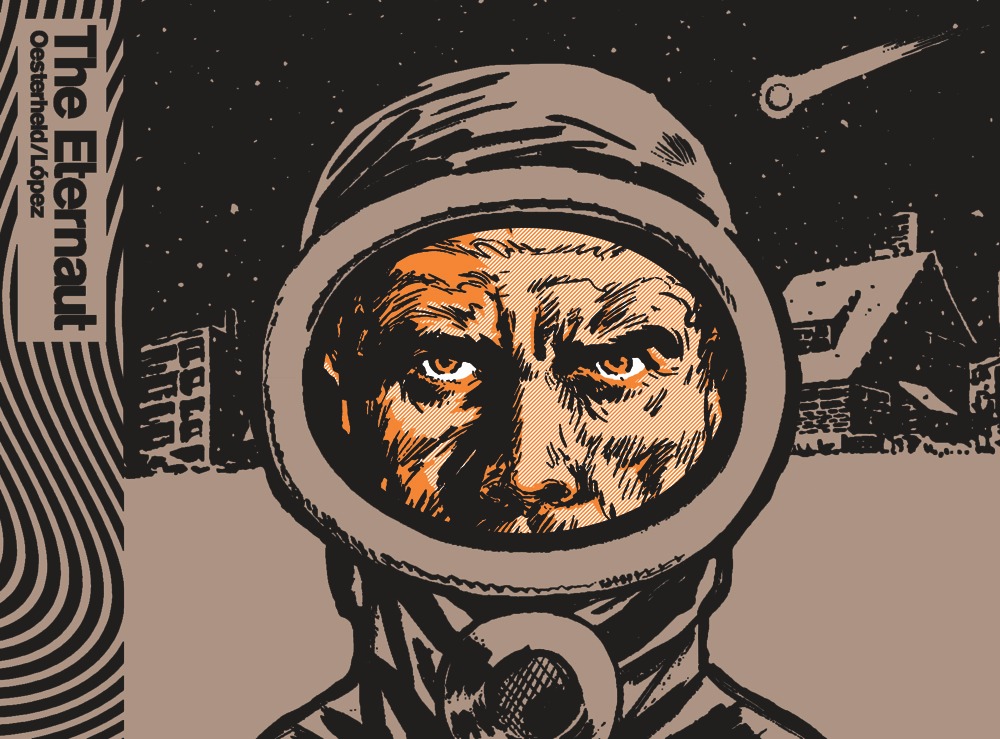Hardcover, 372 pages
English language
Published May 28, 2015 by Fantagraphics.

Hardcover, 372 pages
English language
Published May 28, 2015 by Fantagraphics.
Fantagraphics is proud to publish, for the first time in English, a graphic novel so powerful its main character’s image (much like Che Guevara’s) has become a potent symbol of the endless struggle against oppression; “Juan Salvo” appears on walls and in subways throughout Latin America to this day. This seminal Argentinian science fiction graphic novel was originally released as a serial from 1957–59. Juan Salvo, its inimitable protagonist, along with his friend Professor Favalli and the tenacious metalworker Franco, face what appears to be a nuclear accident, but quickly turns out to be something much bigger than they imagined. Cold War tensions, aliens of all sizes, space—and time travel—this one has it all.
The Eternaut is also thinly disguised political allegory: its writer, Héctor Germán Oesterheld (HGO), because he was involved in groups who protested the military dictatorship, was “disappeared” and presumed dead in 1977. Classical artist Francisco Solano …
Fantagraphics is proud to publish, for the first time in English, a graphic novel so powerful its main character’s image (much like Che Guevara’s) has become a potent symbol of the endless struggle against oppression; “Juan Salvo” appears on walls and in subways throughout Latin America to this day. This seminal Argentinian science fiction graphic novel was originally released as a serial from 1957–59. Juan Salvo, its inimitable protagonist, along with his friend Professor Favalli and the tenacious metalworker Franco, face what appears to be a nuclear accident, but quickly turns out to be something much bigger than they imagined. Cold War tensions, aliens of all sizes, space—and time travel—this one has it all.
The Eternaut is also thinly disguised political allegory: its writer, Héctor Germán Oesterheld (HGO), because he was involved in groups who protested the military dictatorship, was “disappeared” and presumed dead in 1977. Classical artist Francisco Solano López (who had to flee Argentina for Spain) illustrated the book in a gritty, realistic style. This collaboration between two of the biggest names in Latin American comics is still powerful: the story of Juan Salvo, fighting to save Argentina and the world, lives on in sequels, retellings, and adaptations.